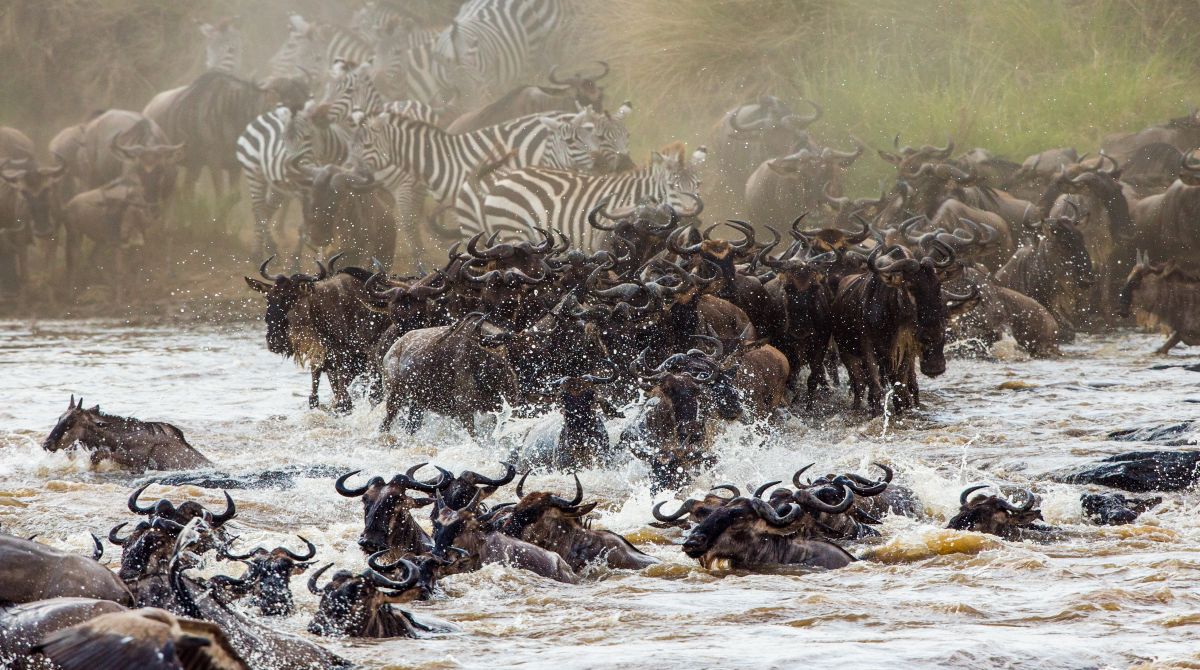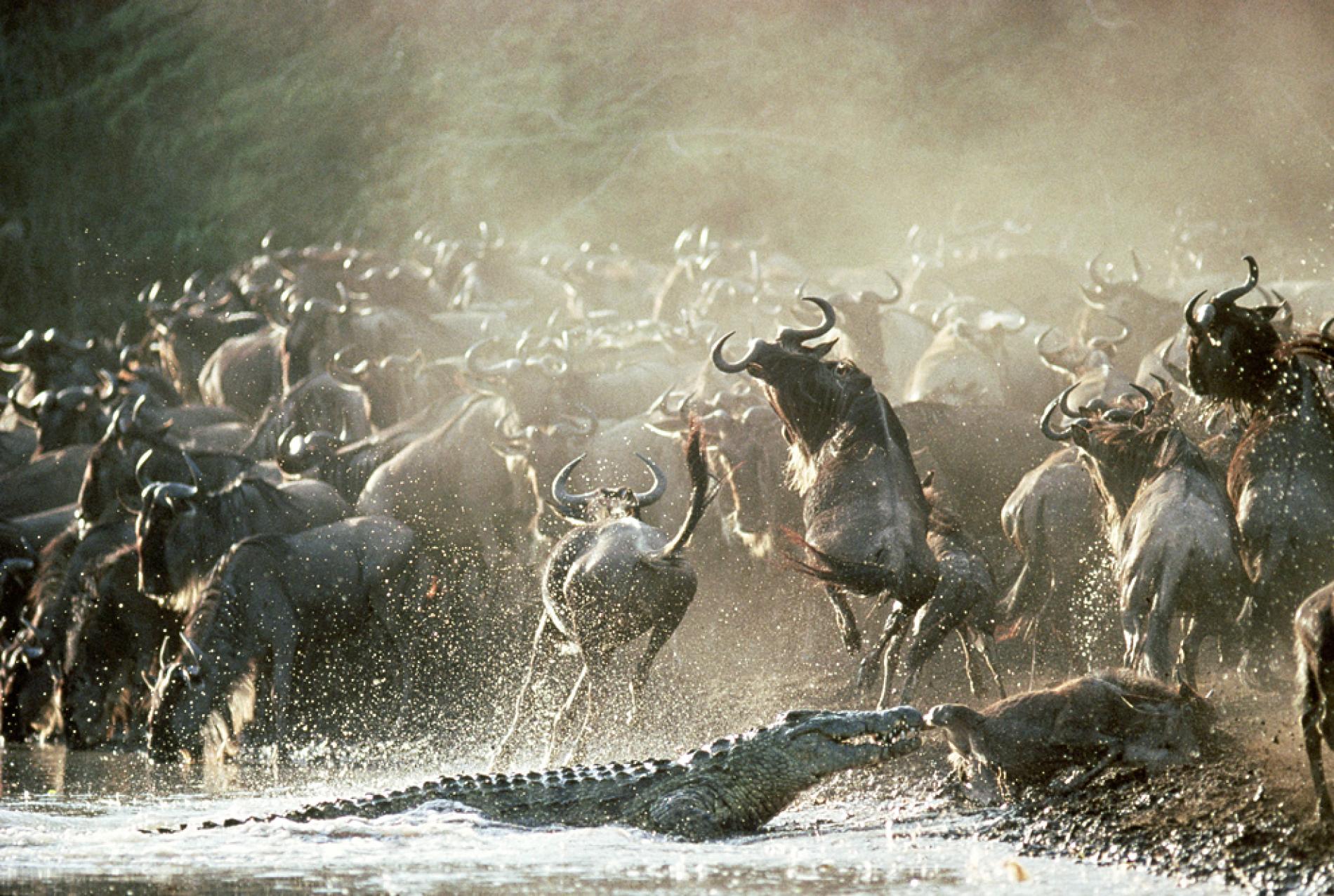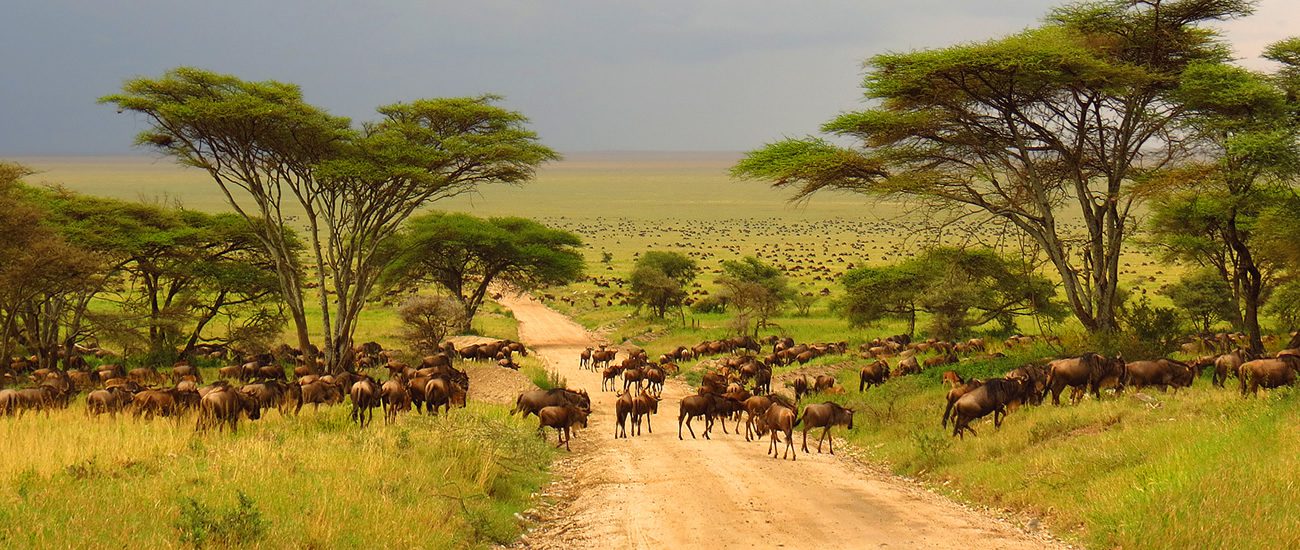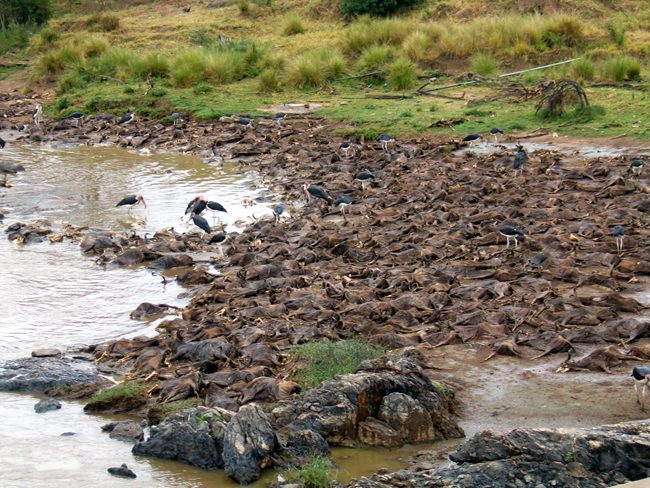“The New seventh wonder of the world” is here with us again. A captivating and dramatic movement of about two million wildebeests, the greatest wildlife show on earth. The animals migrate from the Serengeti National Park in Tanzania to the greener pastures of the Maasai Mara National Reserve during July through to October. The migration has to cross the Mara River in the Maasai Mara where crocodiles will prey on them. This is one of the highlights as the animals try and cross the Mara River alive. The lions, hyenas, leopards, cheetahs and lesser predators await the annual coming of the migration with eager anticipation.
Towards the end of the short dry season, around March, the short-grass plains of the southernmost Serengeti begin to dry out and the wildebeest begin their journey, heading towards the western woodlands.
How do the wildebeest know which path to follow?
There are at least two possible answers, according to behaviorist and ecologist Harvey Croze, co-author of The Great Migration. The wildebeest’s journey is dictated primarily by their response to the weather; they follow the rains and the growth of new grass. And, although there is no scientific proof that this is true, it seems that they, and other animals, react to lightning and thunderstorms in the distance. But it is probably instinctive knowledge, etched into their DNA by hundreds of thousands of years of natural selection which is the major reason why they know in which direction they must travel.

At this time their biggest need is usually to find water, and these more westerly areas can provide it. Still feeding and fattening on the nutritious short grass the herds scatter widely across the plains, shifting on a whim in response to factors beyond our knowledge.
Once on the grasslands of the Maasai Mara, the wildebeest spend several months feeding and fattening once more, taking advantage of the scattered distribution of green pastures and isolated rainstorms. By late October, when the first of the short rains are falling on the Serengeti’s short-grass plains, filling seasonal waterholes and bringing new flushes of growth, the wildebeest start heading south again.
Despite the migration being an awesome show, over 1.5 million animals begin a journey that will undoubtedly cause death to many of their own, but will also bring life to many more animals as they follow the rains in search of green nutrient-rich fields that will sustain the next generation.
Their death however sustains the Mara ecosystem. Rotting animal flesh spikes the aquatic ecosystem with nutrients. But once carcasses disappear, bones – which make up nearly half of biomass inputs – continue to feed the river. The most frequent terrestrial scavengers on carcasses were Marabou storks, white-backed vultures, Rüppell’s vultures, and hooded vultures, consuming 6-9% of soft tissues.
If there is a safari you should go on, this has it be it. The Maasai Mara wildebeest migration happens during July through to October. The migration has to cross the Mara River in the Maasai Mara where crocodiles will prey on them. This is one of the highlights as the animals try and cross the Mara River alive. It is always a great opportunity for people to witness nature at its best.
@s.h.i_s.h.i







